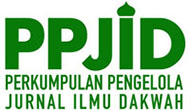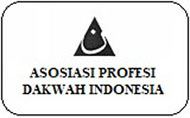Da'wa Communication Model in Indonesia and Malaysia
Abstract
This article examines the communication models employed by Islamic preachers (da'i) in Indonesia and Malaysia, with the aim of identifying effective strategies for disseminating religious messages within different cultural and societal contexts. By comparing the da’wa (Islamic preaching) approaches in both countries, the study analyzes how cultural, religious, and social dynamics shape communication practices. It explores both interpersonal and mass-mediated communication channels to uncover their respective strengths, limitations, and implications for contemporary da’wa. The analysis also considers the challenges posed by globalization and technological advancement, emphasizing the necessity for preachers to adapt to shifting modes of communication. Ultimately, this comparative study offers critical insights into the factors that contribute to successful Islamic preaching in Southeast Asia and provides practical recommendations for enhancing the relevance and impact of da’wa across diverse audiences.
Keywords
Full Text:
PDFReferences
Al-Saʿdi, & Nasir, ʾAbd al-Raḥman ibn. (2000). Taisīr Karīm Al-Raḥmān Fī Tafsīr Kalām Al-Mannān. . Mu’assasah al-Risālah.
Alwi, H. (2020). Dakwah cerdas era globalisasi antara tantangan dan harapan. Komunitas, 9(2), 83–89.
Amal, K. (2021). Strategi Komunikasi Dakwah Ustadz Salim A. Fillah. Jasika: Jurnal Studi Islam Dan Kemuhammadiyahan, 1(2).
Amin, F. (2019). Kedatangan dan Penyebaran Islam di Asia Tenggara: Telaah Teoritik tentang Proses Islamisasi Nusantara. Analisis Jurnal Studi Keislaman, 18(2), 67– 100.
Amin, N. (2022). Contemporary da’wah strategies to educate the religious life of minority muslims. Al-Fikru Jurnal Ilmiah, 16(2), 188–199.
Amin, S. M. (2009). Ilmu Dakwah. Amzah.
Amiripana, R. R. , & F. (2023). Strategi Komunikasi Dakwah Melalui Pendekatan Budaya: Studi Kasus di Organisasi Dunia Melayu Dunia Islam (DMDI). Anisa (Aktualisasi Nuansa Ilmu Dakwah), 23(1), 59–75.
Amran, A., Fauzi, H., Purwanto, Y., Darus, F., Yusoff, H., Zain, M., & Nejati, M. (2017). Social responsibility disclosure in islamic banks: a comparative study of indonesia and malaysia. Journal of Financial Reporting and Accounting, 15(1), 99–115.
Anis, M., & Zaki, I. (2019). How islamic economics view on ecology? AFEBI Islamic Finance and Economic Review, 4(2).
Arif, A., Cikka, H., Zaifullah, Z., & Kahar, M. (2022). The repositioning of the islamic boarding school cultural da’wah movement in spreading wasathiyah islamic values. Golden Ratio of Social Science and Education, 2(2), 77–86.
Aslan, A., & Pong, K. (2023). Understanding the trend of digital da’wah among muslim housewives in indonesia. Fikroh Jurnal Pemikiran Dan Pendidikan Islam, 16(1), 11–22.
Ayyasi, H. Y., & Ariyadri, A. (2023). Urgensi Dakwah Menurut Muḥammad ‘Abduh (Analisis Pendekatan Tafsir Maqāṣidī di dalam Tafsir al-Manār). Izzatuna: Jurnal Ilmu Al-Qur’an Dan Tafsir, 4(2).
Hamid, A. (2017). Globalisasi dan Tantangan Da’wa. Kordinat, 16(1).
Hamid, A. F. A. (2016). The Resurgence of Sufism in Malaysia: A Case Study of the Naqshbandi Haqqaniyya Order. Islam and Christian–Muslim Relations, 27(1), 35– 52
Hamid, A. F. A. (2020). State-Religious Authority and the Management of Islamic Preaching in Malaysia. Southeast Asian Studies, 9(1), 1–26.
Hew, W. W. (2018). Social Media, Islam, and Young Muslims: A Case Study of Cyber- Piety in Malaysia. Routledge.
Hoesterey, J. B. (2016). Rebranding Islam: Piety, Prosperity, and a Self-help Guru.
Stanford University Press.
Ishaq, R. (2022). Political da’wah strategy of islamic parties in indonesia. Jurnal Ilmu Dakwah Academic Journal for Homiletic Studies, 16(2), 345–364.
Jihad, B. (2021). Implementasi prinsip amar makruf nahi munkar sebagai etika politik islam. Sophist Jurnal Sosial Politik Kajian Islam Dan Tafsir, 3(1), 108–128.
Latief, H. (2018). Indonesian Da‘wa and the Making of a Religious Public. Journal of Indonesian Islam, 12(2), 165–194.
Lee, Y., Jung, M., Nathan, R., & Chung, J. (2020). Cross-national study on the perception of the korean wave and cultural hybridity in indonesia and malaysia using discourse on social media. Sustainability, 12(15).
Majid, M. A., & Marlon, Y. (2016). Mosque and Application of Da’wa Strategy on the Multi-Ethnic Society in Malaysia. Jabatan Kemajuan Islam Malaysia, 8(1).
Makkelo, I. D. (2010). Mengurai Keserumpunan: Dunia Melayu dalam Konteks Hubungan Bangsa Serumpun Indonesia-Malaysia. Penerbit Ombak.
Matondang, S. (2016). The revival of chineseness as a cultural identity in malaysia.
Khazar Journal of Humanities and Social Sciences, 19(4), 56–70.
Modibbo, M. S. A. (2017). A general description of the formation and activities of Islamic. AJOL - African Journals Online, 7(2).
Mohamed, H., & Othman, M. A. (2021). Emotional Engagement and Islamic Da’wah in Malaysia: The Case of Ustaz Ebit Lew. Journal of Islamic Marketing, 12(3), 532–
https://doi.org/10.1108/JIMA-10-2020-0305
Moleong, L. J. (2007). Metodologi Penelitian Kualitatif. Pustaka Jaya.
Muhtadi, A. S. (2012). Komunikasi Da’wa: Teori, Pendekatan, dan Aplikasi. Simbiosa.
Muslim, J. (2022). Implementation of da’wah management in developing the professionalism of islamic religious educators. Al-Hayat Journal of Islamic Education, 6(1).
Musmuallim, M., Prasetiawan, A., & Chamadi, M. (2021). Da’wah of banyumas islamic chinese ethnicity in the development of religious moderation. Al-Balagh Jurnal Da’wa Dan Komunikasi, 6(2), 241–272.
Nugraha, R., Darmawan, C., & Iswandi, D. (2020). Islamic da’wah through social media as a means of political education. Atlantis Press.
Nur, M. (2018). Indonesia - malaysia relations from the perspective of maritime history of the straits of malacca. Journal of Southeast Asian Studies, 23(1), 64–67.
Nuwairah, N. (2021). Peace building: tantangan dakwah di era disrupsi. Alhadharah Jurnal Ilmu Da’wa, 19(2).
Rahmah, S., & Aslamiah, R. (2023). Understanding the urgency of da’wah of islam in the context of peace in the nuances of pluralism in indonesia. International Research Journal of Management It and Social Sciences, 10(21), 110–121.
Rahmawati, S. T. (2021). Implementasi Komunikasi Dakwah dan Komunikasi Interpersonal. Jurnal Statement, 11(2).
Rapihi, Q. A. (2018). Dakwah Melalui Media Baharu di Malaysia: Peluang atau Cabaran?
. Al-Hikmah, 10(1).
Retsikas, K. (2017). The Politics of Piety: The Rise of Islamic Preachers in Indonesia.
Indonesia and the Malay World, 45(132), 220–239.
Salim, A., Dillah, I., & Susilowati, I. (2021). Islamic boarding school response to the impact of covid-19 in maintaining the pesantren values. International Journal of Islamic Educational Psychology, 2(2), 177–190.
Samsul, A., & Romli, M. (2013). Komunikasi Dakwah: Pendekatan Praktis. Romeltea. Tim Puslitbang Bimas Agama dan Layanan Keagamaan. (2018). Gerakan Da’wa
Berbasis Masjid di Indonesia (E. Z. A. E. Putro, Ed.). Puslitbang Bimas Agama dan Layanan Keagamaan. .
Wiryanto. (2005). Pengantar Ilmu Komunikasi. Grasindo.
Zed, M. (2015). Hubungan Indonesia-Malaysia: Perspektif Budaya dan Keserumpunan Melayu Nusantara. Tingkap, 11(2), 140–159.
Zulfikar. (2022). Urgensi Dakwah Islam dan Transformasi Sosial. Jurnal Dakwah Dalam Mata Tinta, 9(1).
Zulkarnaini, Z. (2019). Urgensi tafsir al-qur`an dan syarah hadis bagi juru dakwah. Al Munir Jurnal Komunikasi Dan Penyiaran Islam, 81–89.
DOI: http://dx.doi.org/10.24014/jdr.v36i1.29936
Refbacks
- There are currently no refbacks.

This work is licensed under a Creative Commons Attribution-ShareAlike 4.0 International License.
Editorial Office:
2nd Floor, Building of Faculty of Da'wah and Communication, Universitas Islam Negeri Sultan Syarif Kasim Riau. Jl. HR Soebrantas Km 15, Simpangbaru, Tampan, Pekanbaru
Email : jurnalrisalah@uin-suska.ac.id

This work is licensed under a Creative Commons Attribution-ShareAlike 4.0 International License.














